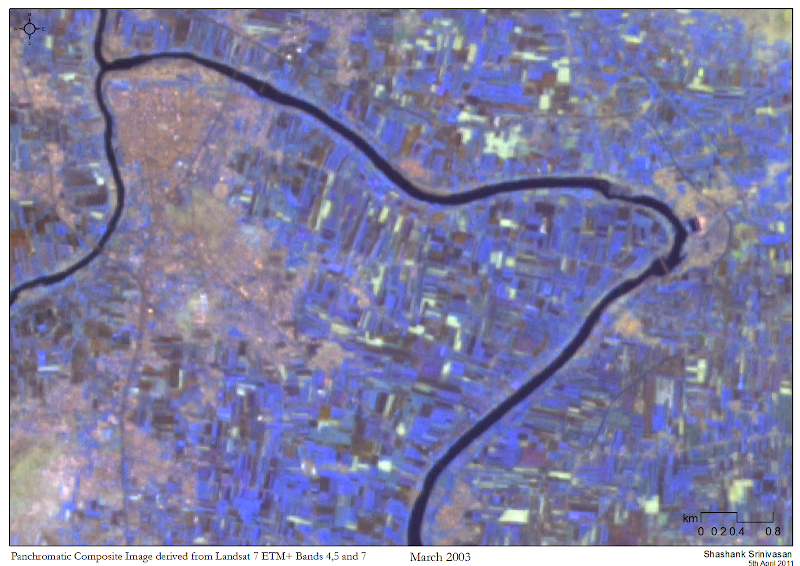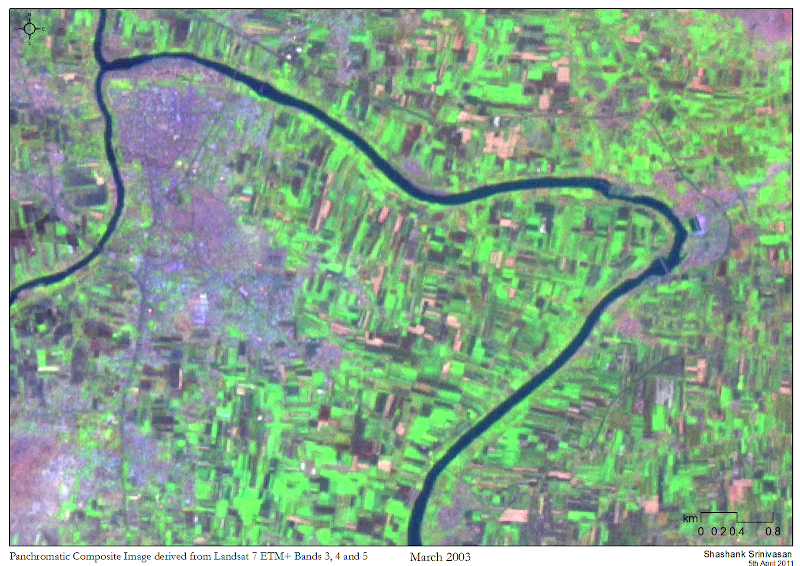

I'm currently working on a project that involves unsupervised classification of Landsat data to highlight barren areas, farms, water bodies and forested areas in Maharashtra, India. I'm using pan-sharpened false-colour composites from the same dataset to help with the ground-truthing; one's been made from bands 3, 4 and 5, while the other's been made from bands 4,5 and 7. They're quite pretty to look at, and it's fun using a slider tool to see how different the surface looks, if only we had different eyes.
In other news, I've finally sorted part of my website out. Big thank you to Rahul (@gonsalves_r), who has been eternally patient with all the tech-support I go on seeking from him. The site's at www.shashanksrinivasan.com and as of next week all visitors to this blog will automatically be diverted there.








